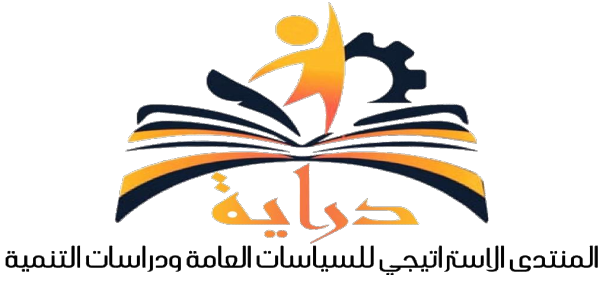State’s Efforts in Developing Upper Egypt

Upper Egypt is currently witnessing a real development shift that changes the shape and course of life for citizens and the most needy groups and improves their living conditions and daily life after a period of suffering, marginalization, isolation and neglect for decades.
Egypt is taking unprecedented steps on the path of development and construction and meeting all needs in all service sectors within the framework of the giant national project to develop the Egyptian countryside, and the presidential initiative “A Decent Life” launched by President El-Sisi with the aim of raising the economic, social, environmental and health standards of the neediest families, and achieving comprehensive development villages in Upper Egypt and enable them to obtain basic services with ease.

– The population of Upper Egypt governorates has reached about 36 million people, which represents approximately 40% of the size of Egypt’s population.
-The number of industrial zones completed with regard to water, drainage, electricity, energy and telecommunications systems is about 20 in the governorates of Upper Egypt (Bani Suef, Minya, Luxor, Assiut, Qena, Fayoum, Sohag, New Valley and Aswan).
Over the past 8 years, the state has spent 1.5 trillion pounds for the development of Upper Egypt governorates, out of a total of 7 trillion pounds of investments that have been implemented or are being completed at the level of the Republic, which represents about a quarter of the total investments spent by the state, as 4,119 projects were implemented in the development program in the following sectors :
1- the transportation sector: 6,600 km of roads were established and developed, and 32 billion pounds were spent in developing the railway system and the implementation of 365 bridges and tunnels at an investment cost of more than 50 billion pounds.
2-Housing Sector: 14 new cities were implemented, including 5 fourth generation cities, and 188 thousand housing units.
3-Water and Sanitation Sector: 121 drinking water projects were implemented at a cost of 9.64 billion pounds, and 224 sanitation projects at a cost of 15.6 billion pounds.
The current coverage rate for drinking water reached 98%, compared to 85% in 2014, and the current coverage rate for sanitation services reached 33%, compared to 22% in 2014.
4-Electricity and Energy Sector: About 8.8 thousand megawatts of electric power have been added, transmission and distribution of electricity at a cost of 33 billion pounds, and the implementation of the Benban project in Aswan, which is one of the largest new and renewable energy projects in the world.
5- Oil and Gas Sector: Natural gas has been delivered to about 1.1 million housing units, and projects have been implemented to develop oil fields, refining, manufacturing, and natural gas delivery.
6-At the level of establishing and developing technological information infrastructure in Egypt to digitize government services: 97 projects were implemented to develop post offices, 40 projects to develop and digitize real estate month and 89 projects to develop and digitize courts and prosecutor’s offices.
7-The education sectors have seen a significant breakthrough in terms of the establishment and development of schools and universities. At the pre-university level, 2,320 new schools were established, 219 of them technical schools. In the area of higher education, two state universities, five private universities and 105 new colleges and institutes have been established.
8-In the health sector: 63 projects have been implemented in the field of establishing and developing hospitals. 1,500 medical convoys have been launched to provide various medical services.
9-In the agricultural and irrigation sector: 550 thousand feddans have been reclaimed, and a modern irrigation system has been implemented in more than 30 thousand feddans. The largest date farm in the world has been established on an area of 40,000 feddans in Toshka.
10- In the industrial sector: 10 industrial complexes have been implemented and are underway, with a total of 2,628 industrial units, providing 26,000 job opportunities.
– As a result of these projects:
– Public investment rates increased by about 500%, while the growth rate of private investments reached about 55%.
– The annual unemployment rate declined for the year 2021, reaching 7.4%, compared to 7.9% in 2020..and it declined in particular in Upper Egypt, where it recorded about 5%, while it recorded 6.4% in the governorates of Lower Egypt.
– 24.5% of the total employed are located in Upper Egypt, compared to 32.4% in Lower Egypt.
– Poverty rates decreased in rural Upper Egypt in 2019/2020 by 3.79%, compared to 2017/2018.
-The illiteracy rate decreased by about 3%. – All unsafe areas have been removed.
Decent life
All the governorates of Upper Egypt accounted for 96.8% of the total appropriations implemented in the Decent Life Initiative, and the percentage of implementation of sanitation projects reached 97.3%. As for the medical sector, the percentage of implementation of health units reached 90.2%, and in the educational field, the rate of establishing schools reached 48.8%, and in the field of roads, the percentage of implementation of paving. And raising the efficiency of roads by 85.2%, and in the field of irrigation, 247 projects were implemented, in addition to rehabilitating canals with a length of 2,470 kilometers at a cost of 8.60 billion pounds, in addition to establishing, replacing and renovating 4,179 industrial facilities on waterways, and developing irrigation in old lands in the control of 60,000 feddans. The construction and replacement of covered drainage networks and the expansion of exposed drains, as well as the implementation of the new Dairout Barrage project to serve 1.60 million feddans.





